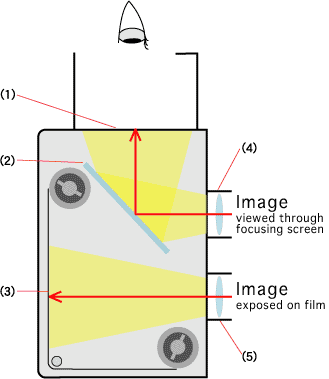Here is the official English version of the Recesky instruction manual. It takes a minute to load as it is a PDF. The translation is very poor, so I suggest you read this translation that was made by some enthusiasts as it may be more helpful than the original. There is also a blog with some additional great tips for the construction of the Recesky with a great many photos. Strongly suggest you read it all over before beginning assembly of your camera. I don't have any spare parts, so please take your time to insure you don't break anything.
Rough Specs:
Fixed Aperture of approximately f11
Shutter speed in the range of 1/60-1/125.
Support multiple exposures.
Rough Specs:
Fixed Aperture of approximately f11
Shutter speed in the range of 1/60-1/125.
Support multiple exposures.
Taken with a Faken!
FakenFlex that is! A FakenFlex is a very funny name for a fake Recesky which is in turn a derivate of the GakkenFlex TLR camera. Now that I have worked with genuine Recesky cameras, I realize what junk the fake-fakes really are. If you want to buy a plastic TLR kit, seek out a genuine Recesky. I purchased a number of them from Four Corners Store which is a retailer of toy cameras. I have no affiliation with them, I'm just mentioning them as they sell real Recesky cameras.Real Recesky cameras have the text 'Recesky' molded on the front of the camera below the taking lens. They come in various colors, but they are just painted. The fakes are actually molded in different colors, but some of the plastic used makes them very brittle.
The images below were taken by students of mine using FakenFlex cameras.
Two images immediately below by Jessica Ostrander.
Redscale film, multiple exposed images by Crystal Hand.
Two images below by Emily Pohlman
Two images below by Alyssa Brown.
Images below by Casey Becker
Video details how to modify your camera to add a flash. Gakkenflex image pool on Flickr. A gallery of redscale images. Write up on the genuine Gakkenflex. Alternative way to assemble your camera.
Depending on the FakenFlex that you end up with, the 'ground glass' necessary to form an image may not even be frosted which means it won't form an image. If that is the case, you will have to make your own frosted 'ground class' from whatever diffuse material you can find.
Below is an image showing the 'ground glass' that I made from a frosted CD jewel case compared to the clear, worthless plastic that came with the junk FakenFlex that I was assembling.
Below, this image illustrates that the perfectly clear 'ground glass' will not form an image making it worthless.
The quality of the fake-fakes is so poor that sometimes there isn't even holes where there should be!!
The fake-fakes lack the raised bump on the lens which indicates how the lenses should be aligned when assembled.
Below, you can see how poorly the molded products are in the really bad fake-fakes.





























No comments:
Post a Comment